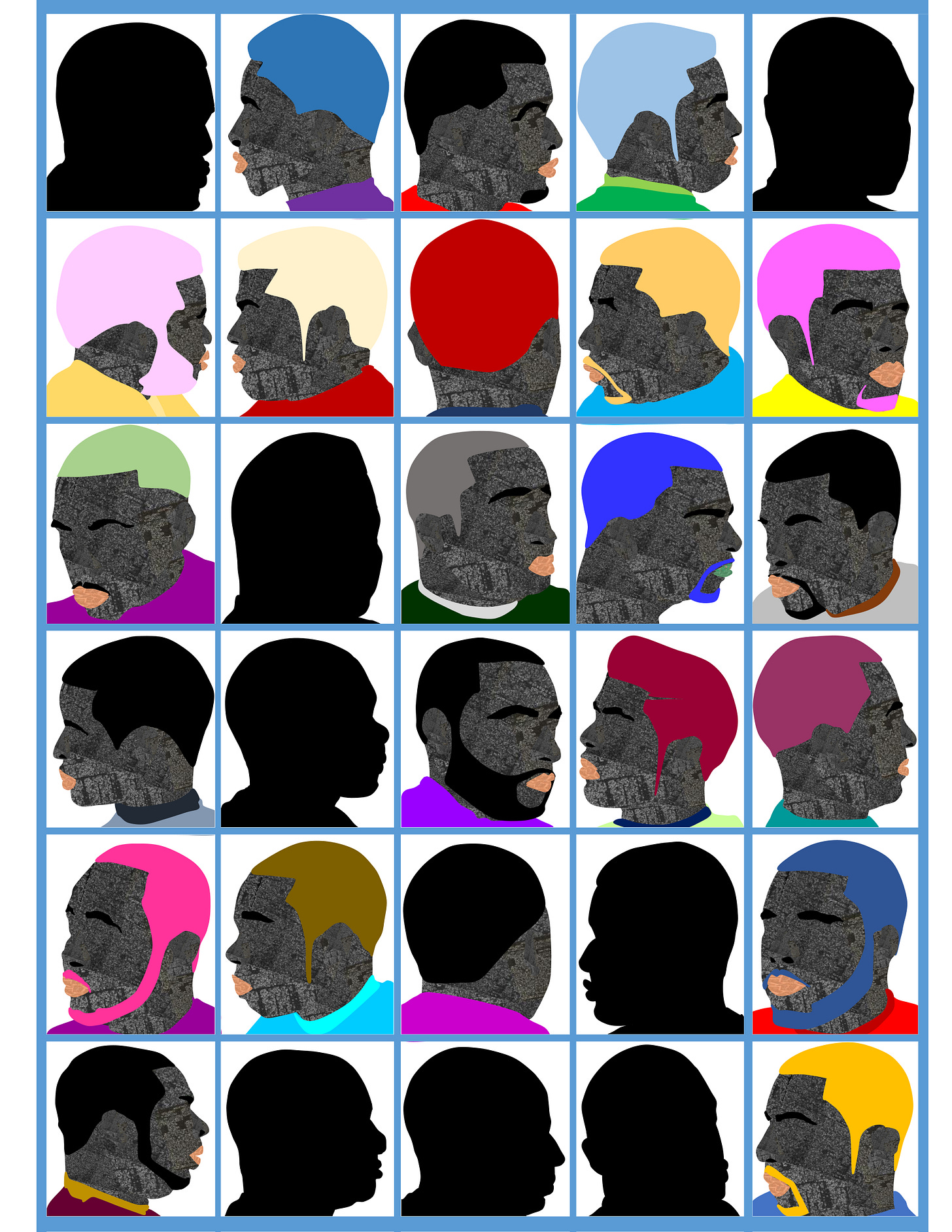First Edition, Issue #2 [Featured Creator: Osinachi on async.art]
Async.art creates a layered experience.

(“Choose The Man You Will Become (4th Man)” by Osinachi.)
Greetings, #cryptoart-ians!
In this issue, we feature a Nigerian cryptoartist and discuss some of the latest metrics of the NFT space.
Featured Artist: Osinachi, on async.art
African artist Osinachi’s “4th Man” is part of a work he created on async.art consisting of a 30-head poster inspired by those at the local barber shop. The heads “were choices that we could make as men in society”, says the creator who grew up in Nigeria with limited access to computers and tools of digital artmaking. “Osinachi is a brilliant protest artist,” writes Artnome founder Jason Bailey in a foreword to an Osinachi exhibition at Kate Vass Galerie. “Rather than depict dramatic scenes of struggle and conflict as is often typical with protest art, his weapon of choice is to highlight normalcy and positivity.” Osinachi has been described as the foremost African cryptoartist.

(“Choose The Man You Will Become” by Osinachi.)
What do on-chain metrics tell us about digital art platforms?
Four digital art platforms — Async, KnownOrigin, SuperRare, and Rarible — have smart contracts that are readily available on Dune Analytics, a great project which is turning Ethereum data into a huge database ripe for data discovery. We did some digging and here are some insights we found!
Relative dollar volume of the platforms. This chart shows Rarible growing throughout April, taking 20% of the chart twice in the last week. Async made a few splashes with their launch and subsequent auctions.

Top 100 buyers by dollar volume and where they spend their money. We see that WhaleShark is top NFT buyer and has contributed over $120K to the space across the four platforms. Most art buyers shop across at least a few platforms. And the vast majority of buying is coming from just a few folks.

SuperRare % sales vs. auctions in dollars. SuperRare shows us that buyers prefer auctions to straight purchases as much over 80% of the time.

If you enjoyed these insights, hit us up on Twitter.


